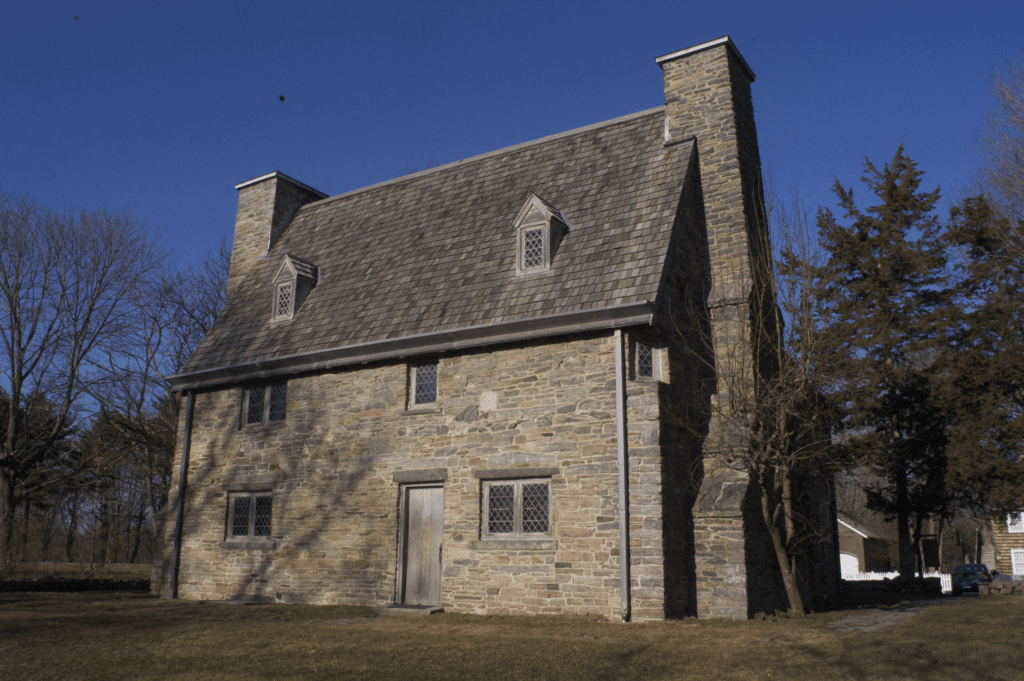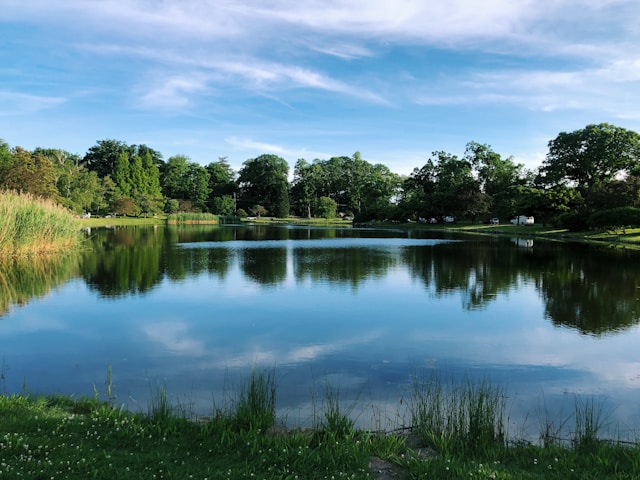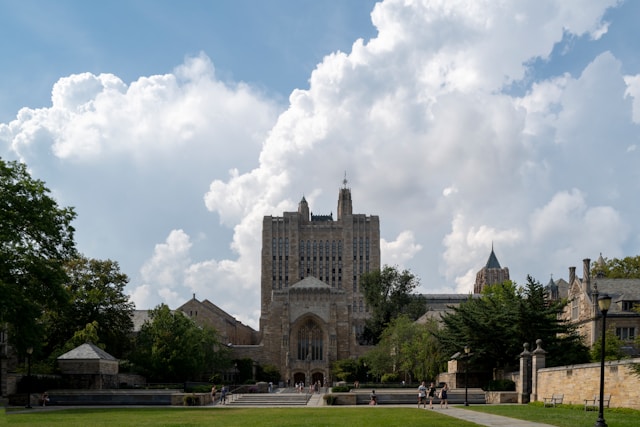
The Henry Whitfield House stands as a remarkable piece of American history tucked away in charming Guilford, Connecticut. Just a short walk from the town green, this stone house has witnessed nearly four centuries of changes since it was built in 1639. The Henry Whitfield House holds the distinction of being Connecticut’s oldest house and New England’s oldest stone house, offering you a unique glimpse into early colonial life.
When you visit this historic gem, you’ll step back in time to the very beginnings of European settlement in Connecticut. The house became the state’s first museum in 1899 and has undergone careful restorations in the early 1900s and 1930s to preserve its historical significance. Today, it continues to welcome visitors who want to explore the rich history of early New England through the story of this enduring structure.
Find available hotels and vacation homes instantly. No fees, best rates guaranteed!
Check Availability Now
Henry Whitfield State Museum
The Henry Whitfield State Museum is home to Connecticut’s oldest house and New England’s oldest stone house. Built in 1639, this quaint structure offers you a unique glimpse into nearly four centuries of American history through its three floors filled with historic furnishings and artifacts.
When you visit, you can explore the Whitfield House, Visitor Center, and Education Building. The museum grounds feature sprawling lawns, extensive stone walls, mature trees, and even a ship’s cannon from the War of 1812. You can also enjoy a section of the New England Trail that runs through the property.
The museum is currently updating its interpretation to acknowledge the complex history of European settler colonialism and work toward a more inclusive narrative. This includes better documenting the relationship between the Guilford settlement and its Indigenous neighbors, making your visit not just educational but thought-provoking.
If you can’t visit in person, the museum offers virtual experiences including online tours and digital jigsaw puzzles featuring images of the house and collection objects. The museum is open Wednesday through Sunday, 10:00 AM to 4:00 PM, from May through October.
Rating: 4.8 (37 reviews)
Location: 248 Old Whitfield St, Guilford, CT 06437
Contact: (203) 453-2457
Website: Visit Website
Historical Background
The Henry Whitfield House stands as a remarkable testament to early American colonial history. Built in 1639, this iconic structure has witnessed nearly four centuries of Connecticut’s development while maintaining its original stone construction.
Origins and Construction
The Henry Whitfield House was constructed in 1639, just before the settlement of Guilford was established. Reverend Henry Whitfield, the town’s first minister, built this impressive stone structure as both a home and a fortress for the community. The house’s thick stone walls weren’t just architectural choices – they served as protection against potential attacks.
You’ll notice the distinctive stone construction immediately when visiting. It’s not just the oldest house in Connecticut but also holds the title of being the oldest stone house in all of New England! The sturdy walls and simple design reflect the practical needs of early colonial settlers.
The original construction featured small windows, massive fireplaces, and a layout meant to accommodate both Whitfield’s family and community gatherings.
Significance in Colonial Times
During colonial times, the Whitfield House served multiple important functions. As the minister’s residence, it was a center of religious and community life. Town meetings, religious services, and important gatherings happened within these stone walls before dedicated spaces were built.
The house also functioned as a fortress during uncertain times, offering protection to settlers who worried about conflicts with Native Americans. Its stone construction made it more secure than the wooden homes typical of the era.
You can imagine the house as a hub of activity in the 1600s, with Reverend Whitfield leading religious services while providing leadership to the new community. The home represents the determination of early settlers to establish permanent roots in Connecticut.
After Whitfield returned to England in 1651, the house changed hands several times but maintained its historical significance throughout colonial America.
Architectural Features
The Henry Whitfield House stands as a remarkable example of 17th-century New England architecture with distinctive features that have survived for nearly four centuries. You’ll be amazed by both its sturdy stone construction and the fascinating historical artifacts preserved inside.
Stone Structure Design
When you visit the Henry Whitfield House, you’ll immediately notice its impressive stone construction. Built in 1639, it’s the oldest stone house in New England! The thick walls were made from local granite gathered from nearby fields and set with mortar. This sturdy design served two important purposes – it provided protection during potential conflicts with Native Americans and kept the minister’s family warm during harsh Connecticut winters.
The house features a steep roof, originally thatched but later replaced with more durable materials. Large windows were added during later renovations, but the basic stone structure maintains its Cotswold, England influence. You’ll see how the building style reflected Reverend Whitfield‘s English origins while adapting to the materials available in the New World.
Interior Layout and Artifacts
Inside, you’ll discover a fascinating floor plan that reveals how colonial families lived. The main floor centers around a massive stone fireplace that served as the heart of the home. This central chimney design was typical of early New England houses. The main hall functioned as both living and dining space, while smaller rooms provided private areas for the large Whitfield family.
Throughout your visit, you’ll see period-appropriate furniture and household items that help bring the 1600s to life. Look for the simple wooden tables, chairs, and bedsteads that reflect the practical colonial lifestyle. Don’t miss the cooking utensils and tools that show how meals were prepared over an open hearth.
The second floor contains bedchambers with additional historical displays. Many artifacts discovered during archaeological digs on the property help tell the complete story of this remarkable house and its inhabitants.
Preservation and Public Access
The Henry Whitfield House has undergone significant preservation efforts to maintain its historical integrity while becoming accessible to modern visitors. Today, it stands as a remarkable museum that lets you step back in time to early Connecticut history.
Restoration Efforts
The 1930s marked a turning point for the Henry Whitfield House when major restoration work began. Old photographs and architectural studies guided preservationists as they carefully restored the stone structure to its original 17th-century appearance.
During this restoration, workers uncovered original features that had been hidden by centuries of modifications. They removed later additions and reinforced the stone walls while maintaining historical accuracy.
The Connecticut state government has played a crucial role in preserving this treasure. When they acquired the property, they established protective measures to ensure its survival for future generations.
Recent preservation work has focused on climate control systems that protect artifacts while remaining invisible to visitors. The stone walls receive regular maintenance to prevent water damage and deterioration.
Visiting Information
You can visit the Henry Whitfield State Museum year-round except on major holidays. The museum offers guided tours that bring the house’s rich history to life through engaging stories and historical context.
Admission prices are reasonable, with discounts for seniors, students, and children under 12. Consider purchasing a Connecticut State Parks Pass if you plan to visit multiple historic sites.
The museum features special events throughout the year, including colonial craft demonstrations and holiday celebrations. These events let you experience history through hands-on activities.
Accessibility accommodations are available for visitors with mobility challenges. While the historic nature of the building presents some limitations, staff work diligently to make the experience inclusive for everyone.
Plan to spend about 90 minutes exploring the house and grounds to fully appreciate this remarkable piece of New England history.
Find available hotels and vacation homes instantly. No fees, best rates guaranteed!
Check Availability Now









